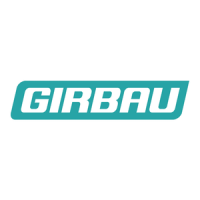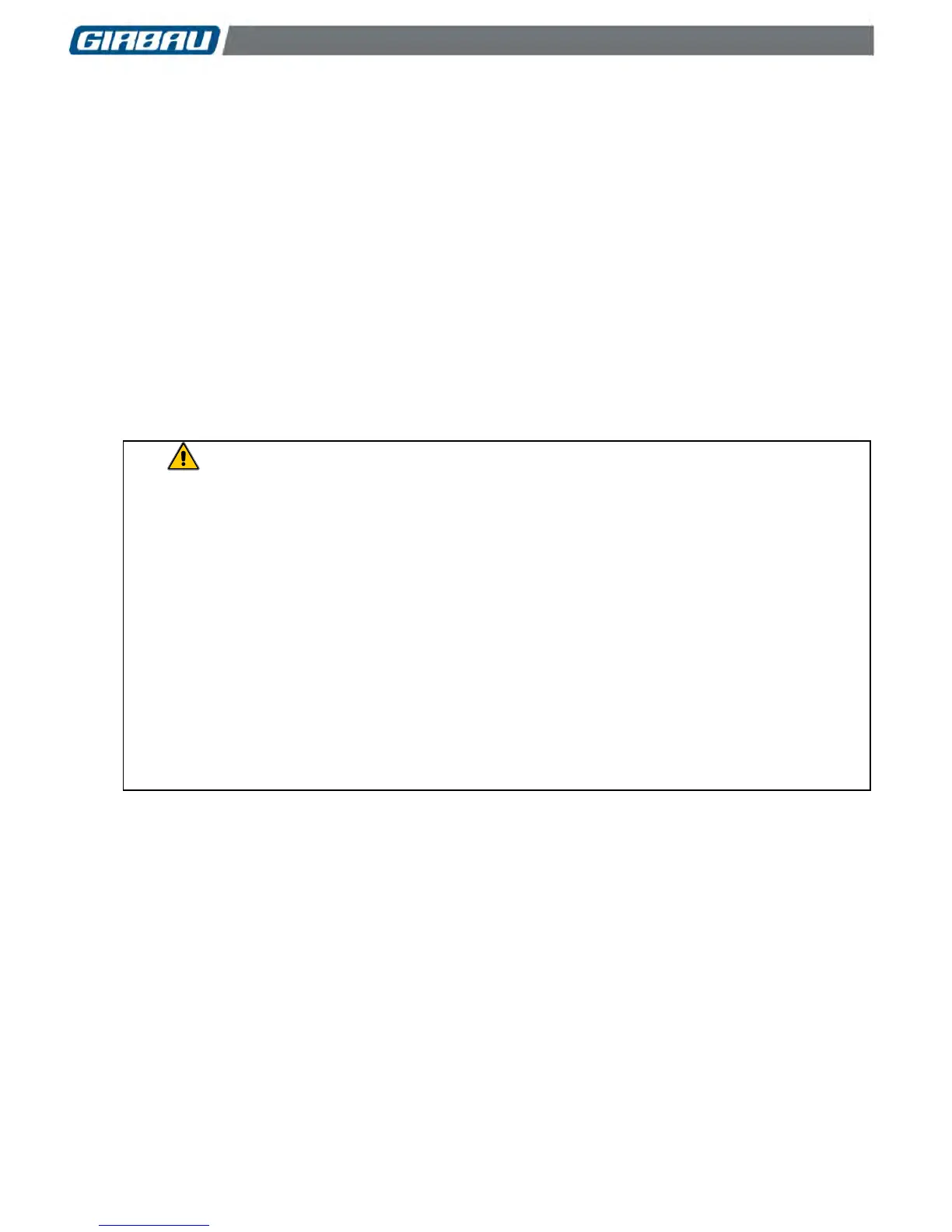
 Loading...
Loading...



Do you have a question about the GIRBAU HS-6024 and is the answer not in the manual?
Comprehensive safety guidelines to prevent hazards like fire, electric shock, and injury during machine operation.
Critical warnings and step-by-step procedures for safe inspection, maintenance, and repair work.
Essential guidelines for optimal use, preservation, and warranty adherence.
Details the construction features like stainless steel drums and functional aspects like microprocessor control.
Overview of protective guards, safety devices (microswitches, fuses), and control elements for safe operation.
Explanation of built-in safety functions such as bath level, temperature control, unbalance, and door safety.
Identification of main power connection and stop devices, including emergency stop button.
Procedure for powering on the machine and navigating to the main menu.
Guide to loading laundry, selecting programs, and initiating a wash cycle.
Explanation of various screens and icons displayed during program execution for real-time status.
Enables real-time adjustments to phase parameters like water, dosing, and temperature during a cycle.
System to detect and manage load unbalance during spin cycles for safety and efficiency.
Defines fundamental programming terms: Function, Phase, and Program.
Steps to access the interface for creating new wash programs.
Process for naming a new program and associating fabric types for optimized washing.
Detailed guide on programming individual phases, covering water, temperature, dosing, and rotation.
Allows creating and running custom single-phase programs for immediate use.
Utilizing A6 Info mode for external signaling and transferring data to control units.
Procedures for editing existing programs, including name, fabric, and phase details.
Introduction to the System Tools menu and accessing its configuration options.
Detailed explanation of parameters for configuring machine operation and programming.
Configuration settings for advanced features like dosing, rotation, and heating gradients.
Critical safety procedures for safely releasing a person trapped within the machine.
Specific steps to free a person trapped by the TILT system's movement.
Method for manually unlocking the machine door during power failures or emergencies.
Guidance on resolving common issues like persistent unbalance, leaks, and forgotten access codes.
List of system alarms, their probable causes, and recommended troubleshooting steps.